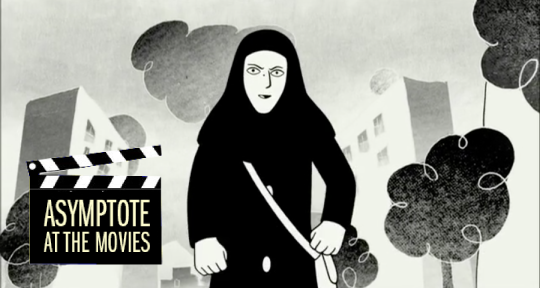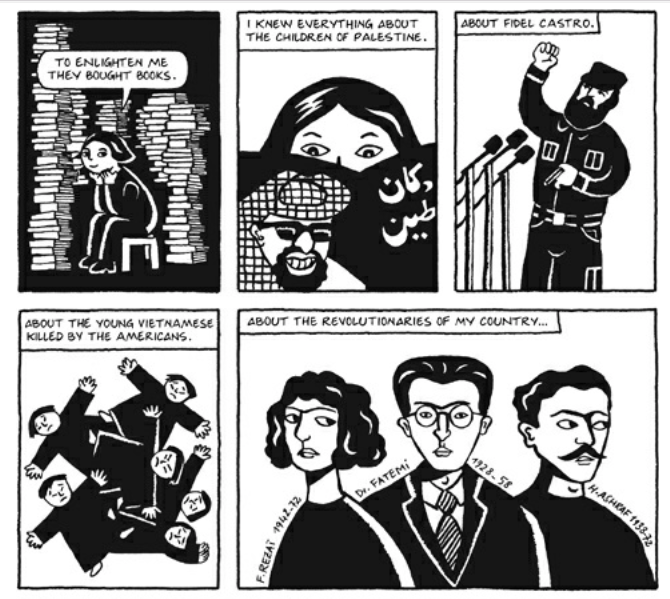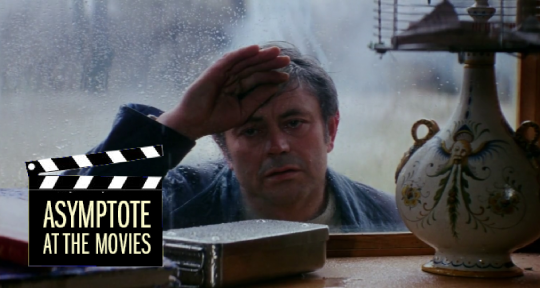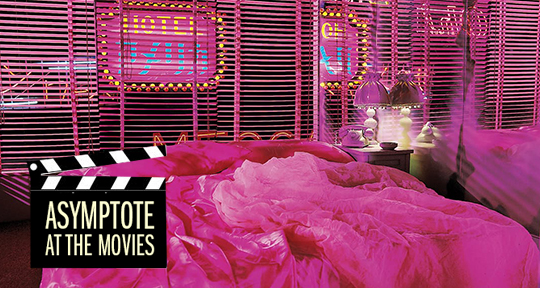“Although this film is universal, I wish to dedicate the prize to all Iranians,” spoke Marjane Satrapi as she accepted the Jury Prize at the 2007 Cannes Film Festival for Persepolis. Adapted from her bestselling graphic novel of the same name, Persepolis is the autobiographical story of young Marjane as she comes of age against the backdrop of the Iranian Revolution. Although she left Iran for Europe as a teenager (briefly returning to Tehran at the age of nineteen) and has lived in France since 1993, her words clarify Iran’s continual importance to her, as well as its enduring presence throughout her work. Written in French, Persepolis is both a memoir about the challenges of growing up and finding an identity and a fierce, intelligent, and nuanced depiction of Iran following the 1979 Revolution. It is at once enlightening, wise, funny, horrific, melancholy, and profound. In the following conversation, Blog Editors Xiao Yue Shan and Sarah Moore consider this groundbreaking graphic novel, which has sold more than two million copies worldwide, and its 2007 film adaptation.
Sarah Moore (SM): Interestingly, Marjane Satrapi co-directed and co-wrote the film, so in Persepolis we can see how the author wanted to transform the drawings to animation. Satrapi recreates her own work, and she does so in a way that is loyal to the graphic novel, whilst clearly making use of what a new form can offer. Marjane is not a typical heroine. She is bold, honest, relatable, and she is blunt about the uncertainties she experienced growing up. The film transfers her to the screen with remarkable success, without losing any of her spark, humour, or complexity; Persepolis stands out for being able to narrate the political through this fierce character. It is the story of Iranian politics and life, as well as the story of a girl traversing through adolescence. Satrapi has often stated that one individual is the only universal thing—so whilst we witness the Iranian Revolution, the killing of political prisoners, and the Iran-Iraq War, we also follow Marjane as she dreams of being a prophet, goes through puberty, falls in love, has her heart broken, and suffers depression. I think Persepolis is rare in being able to move so much of the atmosphere and energy of a text into film, and one that genuinely works as a cinematic narrative as well. Of course, the plot is condensed, especially during Marjane’s time in Vienna. But the subtlety of emotion and the fullness of the characters carry through to the film, as well as the blend of humour and tragedy. What did you think of the move from book to film in a general sense?
Xiao Yue Shan (XYS): There is something more automatic in the transition between graphic novel to film; in textual adaptation, a director must enforce their own visions in a discrete—albeit secondary—architecture, but the graphic novel has an established visual vocabulary. It is a transition that is made with minimal sacrifice. Still, I think there is a certain magic that is rendered between the pages of a graphic novel, in which two frames are juxtaposed by not the logic of movement or chronology, but mimics instead how a scene is pieced together in the mind—with interrupting segments of memory, reference, and unconscious categorization. The rationale of film narrative has to preserve a certain logic: the sense that something is always coming up next, much more resembling the way that biography proceeds—in the distinct knowing that a life continues.
In an interview published in Fourth Genre, Marjane Satrapi says: “When you watch a picture, a movie, you are passive. Everything is coming to you. When you are reading comics, between one frame to the other—what is happening, you have to imagine it yourself . . . It is the only medium that uses the images in this way.”




